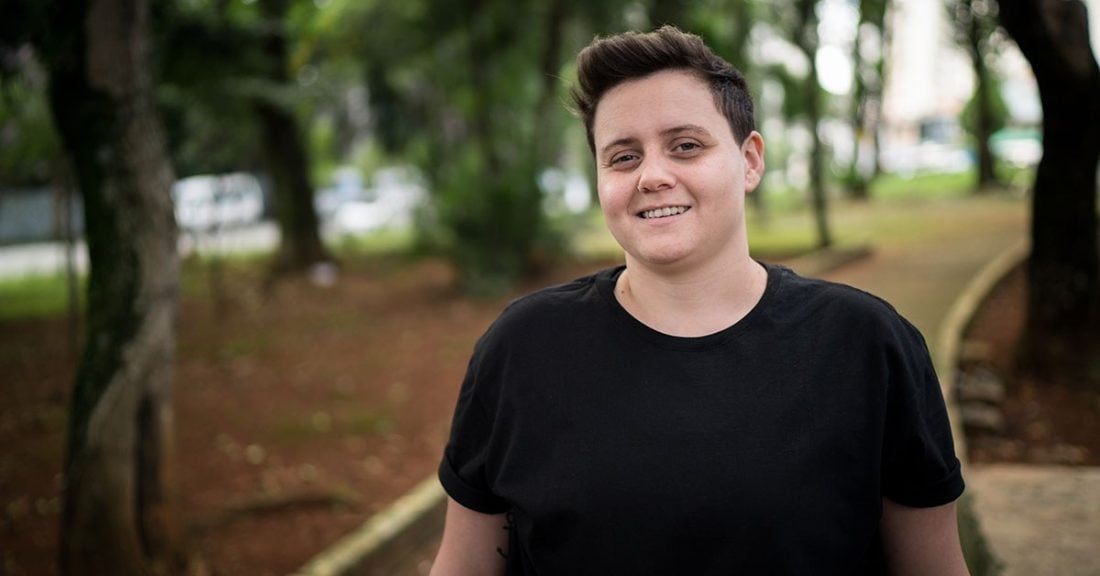Children’s Bureau Advises Agencies to Provide Supportive Care for LGBTQ Youth

The U.S. Children’s Bureau affirmed its support for LGBTQ and gender nonconforming children and youth, especially those in foster care, in a March 2022 information memorandum to the nation’s child welfare agencies.
The Children’s Bureau advises state, tribal and territorial agencies receiving federal funds to ensure that their services and programs for LGBTQ youth are “gender-affirming, caring and supportive of the whole child.” This includes protecting young people’s access to medical and emotional care and providing “opportunities to participate in activities that further support their identity, resilience and development.”
LGBTQ Youth in Foster Care
Young people who are LGBTQ or gender nonconforming are over-represented in foster care, recent studies say. The Children’s Bureau memo cites a multiyear study in Los Angeles, which found that LGBTQ youth are 1.5 to two times more likely than their peers to be in foster care. Recent research in Cuyahoga County, Ohio, and New York City estimates one-third of young people in those child welfare systems identify as LGBTQ, and most are youth of color.
Read our explainer on LGBTQ terminology
Research finds that LGBTQ youth are more likely to experience the trauma of rejection by their families, violence, emotional harm, homelessness and higher suicide rates than their peers. For example, young people who identify as LGBTQ are more likely than others in foster care to experience at least 10 foster care placements, with youth of color who are LGBTQ reporting the highest rates, according to a recent data analysis of survey results from the Opportunity Passport® program — a matched savings program for older youth in foster care created by the Annie E. Casey Foundation. Its 2018 data is based on surveys of program participants. Young people who identify as LGBTQ are more likely than others to have experienced homelessness or couch surfing, and less likely to have at least one supportive adult on whom they can rely for advice or guidance, the analysis says. Also, they are less likely than others to report at least “good” physical and mental health.
Guidance to Child Welfare Agencies
Child welfare agencies “must be prepared and competent to address trauma-related issues that have occurred as a result of the child or youth facing rejection, discrimination or harassment because they are LGBTQI, especially in their family of origin,” the Children’s Bureau advises. When gender is a factor in a child’s removal from a family, “each title IV‑E agency should be particularly vigilant about placing LGBTQ children and youth in homes and child-care institutions where they are supported, safe and can develop as a whole person.” The Children’s Bureau also addresses the issue of gender-affirming medical care for youth who are transgender, firmly calling on agencies to protect young people’s access to medically approved care.
“Too often, systemic barriers and practices are created to deny such children and youth gender-affirming medical care, especially to transgender and gender nonconforming children and youth,” the Children’s Bureau wrote in its memo. “The Children’s Bureau does not support these barriers and practices, and we are unequivocal that they are counter to children and youth’s best interests.”
Two states currently restrict access to gender-affirming medical care for young people and 13 were considering laws that would do so, says a study released in March 2022 by the Williams Institute of the UCLA School of Law. Gender-affirming medical care includes medically approved and prescribed hormone therapy for young people who are transgender.
“Every child and youth who is unable to live with their parents should be provided a safe, loving and affirming foster care placement, regardless of the young person’s sexual orientation, gender identity or gender expression,” the Children’s Bureau’s memo says.
The Children’s Bureau also advises agencies about available resources and the need for:
- family preservation support — to avoid removing the child from the home — for parents who struggle with accepting their LGBTQ child;
- training for child welfare workers and other staff, foster families and kinship caregivers to recognize and address the needs of LGBTQ youth;
- services and support to help LGBTQ youth transition from foster care to adulthood;
- partnerships with community organizations that can provide customized support; and
- collection and use of data illuminating the size and needs of their LGBTQ populations.
About the Children’s Bureau
The Children’s Bureau administers child welfare under the U.S. Department of Health and Human Services. It is a partner of the Annie E. Casey Foundation, Casey Family Programs and Prevent Child Abuse America in Thriving Families, Safer Children, a first-of-its-kind national effort working across public, private and philanthropic sectors to create conditions that strengthen families and develop more just and equitable child welfare systems. The goal is to promote families’ health, well-being and economic success by supporting alternatives to prevent family separation.






